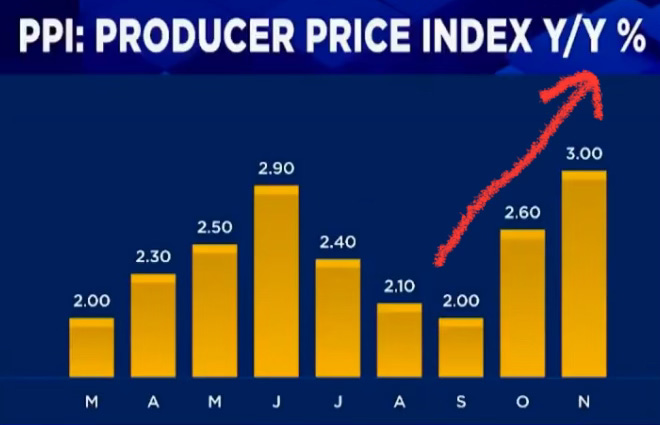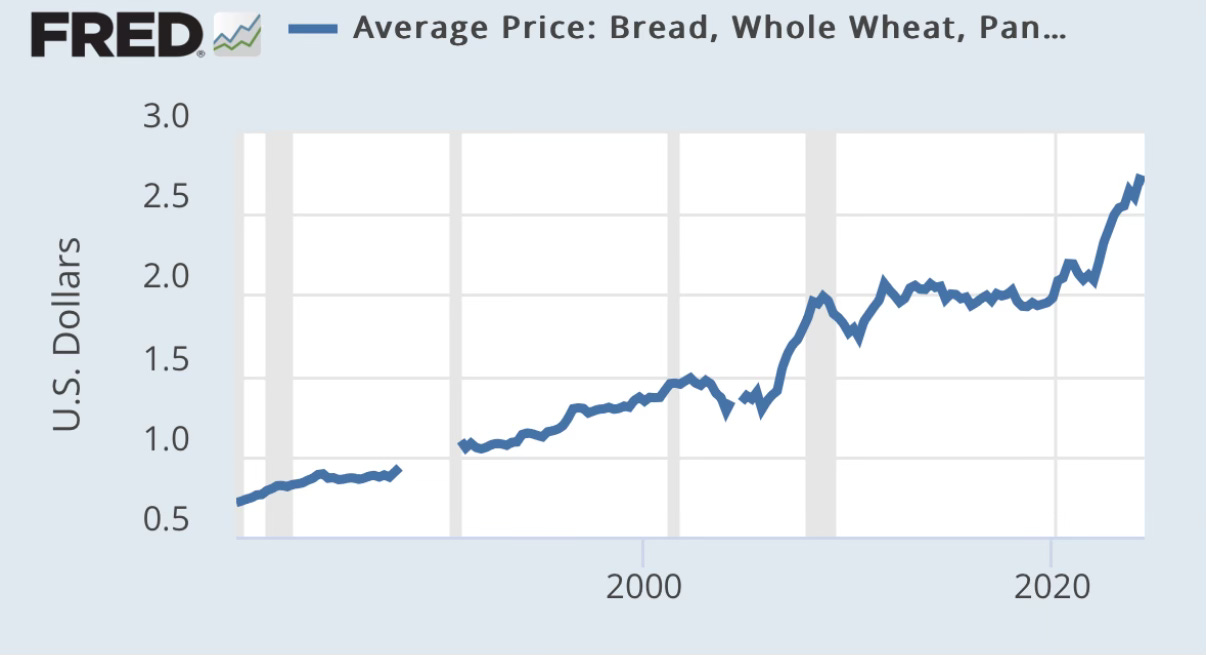Today’s Producer Price Index (PPI) data paints a striking picture of an economy at odds with the assumptions undergirding financial markets. With headline PPI inflation accelerating to 3% and revisions to earlier data consistently moving higher, it is clear that the inflationary pressures unleashed by a massive increase in money supply from 2020 to 2022 are far from resolved.
This persistent inflation, now contributing to a cumulative four-year total of 22%, marks the longest streak above 2% since the stagflationary 1970s. Against this backdrop, markets priced for perfection in 2025 could be setting the stage for a classic case of Murphy’s Law: what can go wrong will go wrong.
The Inflationary Mirage
As we warned in our previous analyses, "Modern Day Rome is Burning" and "America Nears an Inflation Tipping Point," the headline inflation numbers have masked the true extent of the inflationary crisis. The recent upward revisions to the October PPI data further underscore this point. Much like Rome before its fall, today’s “normal” inflation numbers—headline CPI at 2.7% and core inflation at 3.3%—mask deeper systemic imbalances. Month-over-month PPI for food surges of 21% for fresh fruits and 31% for vegetables underscore the erratic nature of inflationary pressures.
The price of wheat, up 75% since 2020, signals a collapse in the purchasing power of the dollar for basic necessities, just like Rome before it.
These trends are not anomalies but predictable outcomes of the Federal Reserve’s monetary largesse and government deficit spending. The $7 trillion expansion in the money supply during the pandemic created a lagging effect, where the full extent of price increases takes years to materialize. As prices rise to meet this excess liquidity, the Federal Reserve faces a credibility crisis.
Markets assume inflation will revert to the 2% target by 2025, yet persistent monthly increases of 0.3%-0.4% suggest otherwise.
Murphy’s Law in Action
Financial markets are priced for a utopian scenario: declining inflation, lower interest rates, and robust earnings growth. Yet, this scenario ignores key risks:
Keep reading with a 7-day free trial
Subscribe to The Coastal Journal to keep reading this post and get 7 days of free access to the full post archives.









